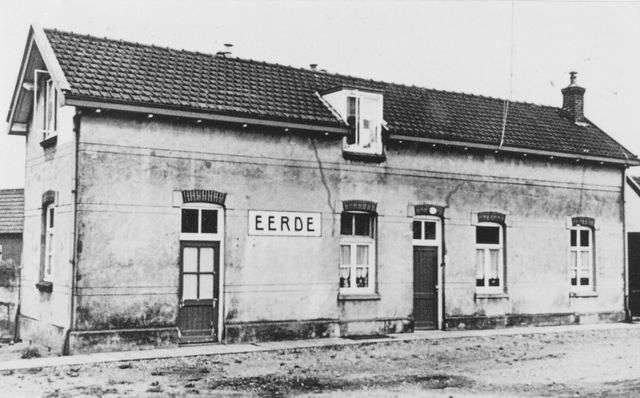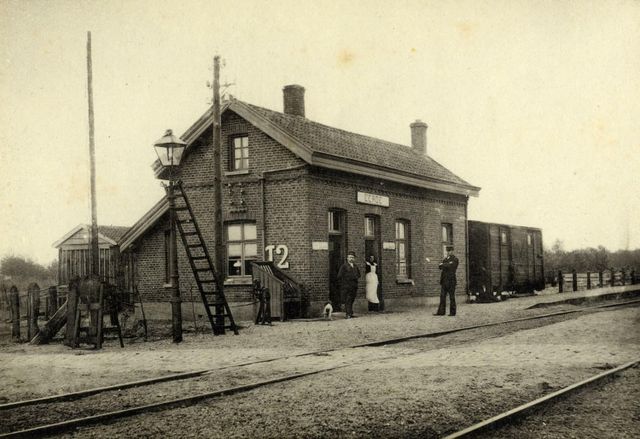Wood craftsmen from Wijbosch, the saw mill from Eerde, clog makers. They all made grateful use of the presence of Eerde halt. This small station ( originally built as watchpost 12) was used until 1969.Via the railway coal, lime and artificial fertilizers were brought in. On the platform travellers could get on and off the train. And because Eerde was a crossing station, trains could pass and overtake each other here. The storage and trans-shipment of goods, guarding the railway crossing, working the points and the clock signal: station employees didn’t get bored here. Though some still had time left for doubtful practices.
Smugglers
A station master and a switchman from Eerde got involved in a smugglers plot in 1917. In those days the Duits Lijntje didn’t have a good reputation in that area. The two railway employees can’t stand the temptation either. While station master Lambert is on the look-out, switchman Johannes secretly loads 900 kilograms of sewing cotton in double-walled train carriages. The merchandise had to cross the border without being seen. The carriages were perfectly loaded with wood and transported to Gennep. After unloading the wood, the apparent empty carriages continue their way to Germany.
Caught
How many times carriages full of contraband successfully crossed the border? Who knows? But this time they got into the wrong box. The smuggling was said to be put up by a German officer. He bribed a merchant in Gennep and the two men in Eerde. Two - to three hundred guilders, that’s what they were offered as bribe money. And more railway men were involved. Engine drivers and shunters who were involved got 10 guilders per carriage that crossed the border. Lambert and Johannes were sentenced to four months imprisonment by a judge. And they were dismissed, just like the others who were involved. All goods were confiscated, including the double-walled carriages.
-

-

-
Go to other translations
Do you want to read more about the Duits Lijntje? Go (back) to the translations of the other locations on the railway track in Meierijstad.
Go to other translations
